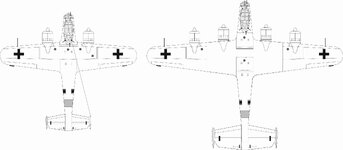Thumpalumpacus
Major
What if Wever had not been killed in the crash? The primary Luftwaffe proponent of heavy bombing in the Douhetian mold, how might his continued command have changed Luftwaffe doctrine, strategy, tactics, and equipment?
My own thoughts are that he would have of course pushed for, and perhaps succeeded in, getting more LW heavies in earlier. I think that the German industrial base couldn't really support a large fleet of big bombers, neither in manufacturing nor in support -- say, fueling thirsty planes, or how many engines can you really build to make this happen?
But if they had some of these heavies around (of whatever design), how might that have affected the Battle of Britain or the invasion of Russia, in your opinion? How would it affect "Blitzkrieg" by taking resources away from close-support aircraft or doctrine? Battle of the Atlantic?
I am curious about the opinions here, of such an informed crowd. Also. for the sake of this hypothetical, let us set aside the whole dive-bomber thing, which I think we all agree is mostly pretty stupid beyond single-engined craft due to size issues
My own thoughts are that he would have of course pushed for, and perhaps succeeded in, getting more LW heavies in earlier. I think that the German industrial base couldn't really support a large fleet of big bombers, neither in manufacturing nor in support -- say, fueling thirsty planes, or how many engines can you really build to make this happen?
But if they had some of these heavies around (of whatever design), how might that have affected the Battle of Britain or the invasion of Russia, in your opinion? How would it affect "Blitzkrieg" by taking resources away from close-support aircraft or doctrine? Battle of the Atlantic?
I am curious about the opinions here, of such an informed crowd. Also. for the sake of this hypothetical, let us set aside the whole dive-bomber thing, which I think we all agree is mostly pretty stupid beyond single-engined craft due to size issues

